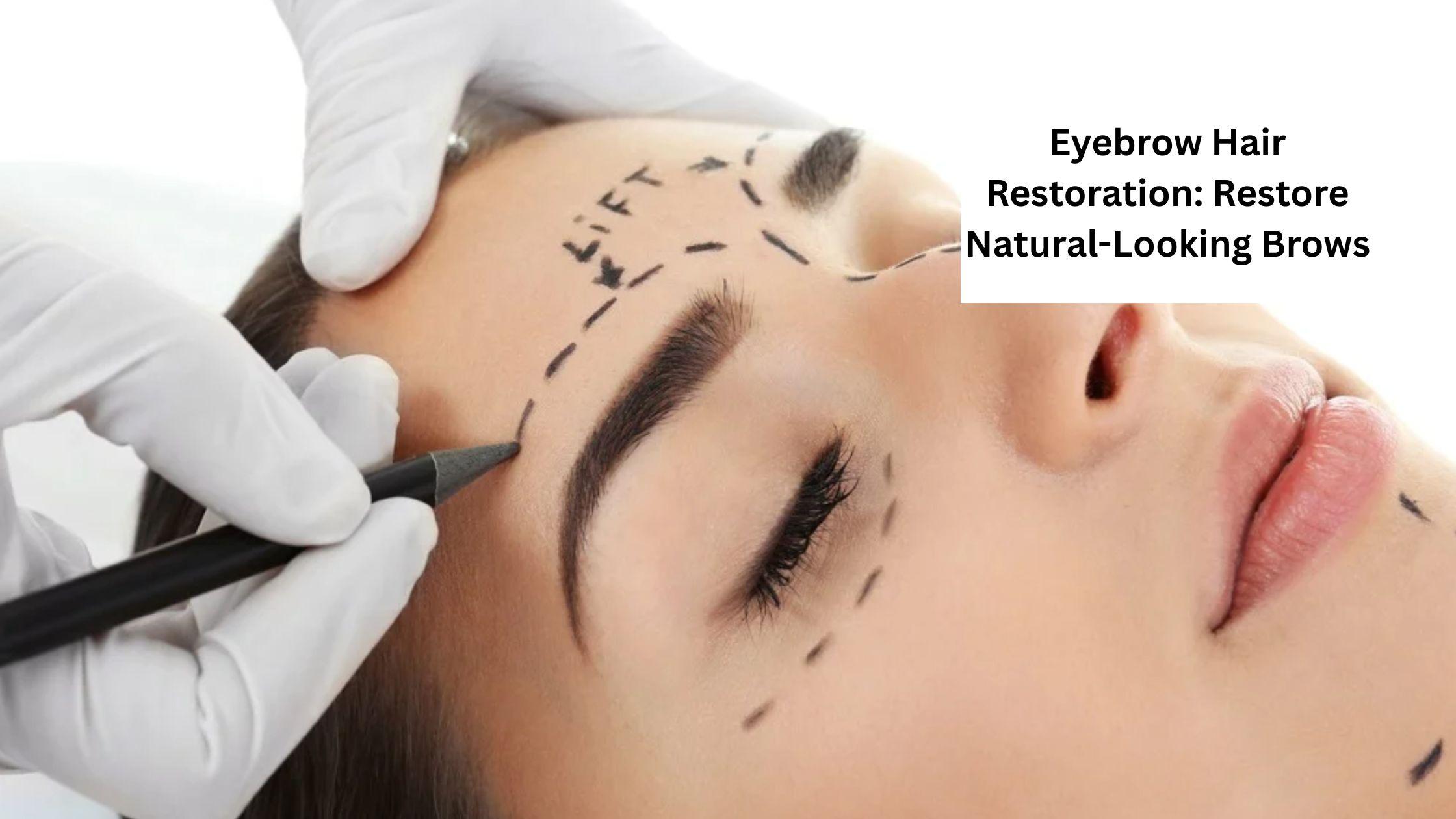Eyebrows play a vital role in defining facial symmetry, enhancing expressions, and framing the eyes. However, many individuals struggle with thinning or sparse brows due to over-plucking, genetics, or medical conditions. While cosmetic solutions like pencils or microblading offer temporary fixes, an increasing number of people are opting for eyebrow hair restoration to achieve fuller, natural-looking brows that last permanently.
What Is Eyebrow Hair Restoration?
Eyebrow hair restoration is a niche cosmetic surgery that involves transplanting healthy hair follicles, generally from the head to the eyebrow area. Unlike microblading or eyebrow tattoos that rely on pigment, this technique uses real hair, creating a soft, realistic look that grows with time. The results are long-lasting and tailored to each individual’s facial features and aesthetic goals. Ideal candidates for eyebrow hair restoration include individuals with thinning brows due to ageing, trauma, burns, alopecia, or genetic factors. It's also suitable for those seeking to correct asymmetry or achieve a more defined arch.
Causes of Eyebrow Hair Loss
Eyebrow thinning is a common concern with various underlying causes:
- Over-plucking and waxing: Years of aggressive grooming can cause permanent damage to hair follicles.
- Ageing: As we age, hair growth slows down, including in the brow region.
- Hormonal changes: Conditions like hypothyroidism can lead to eyebrow thinning.
- Medical conditions and trauma: Burns, surgery, chemotherapy, or alopecia areata can cause brow loss.
- Genetics: Some individuals are born with sparse or patchy brows.
Understanding the root cause is essential before considering eyebrow transplant.
Eyebrow Restoration Techniques
There are two main surgical techniques used in eyebrow transplant.
- Follicular Unit Extraction (FUE): FUE involves extracting individual hair follicles from the donor site—typically the back of the scalp—and implanting them into the recipient area, such as the brow. This method minimizes scarring and allows for precise placement, making it ideal for shaping brows.
- Follicular Unit Transplantation (FUT): The strip method, also known as FUT, entails removing a small piece of scalp from the donor site and disassembling it into grafts. While effective, this method may leave a linear scar and is less commonly used in delicate areas, such as the eyebrows.
Both techniques require artistic skill and precision to ensure the angle, depth, and direction of each transplanted follicle mimics natural eyebrow growth.
The Procedure: Step-by-Step
The process of eyebrow hair restoration typically includes:
- Consultation: The surgeon assesses your medical history and goals to create a personalised brow shape tailored to the unique anatomy of your face.
- Donor Hair Harvesting: Hair is carefully extracted from the donor site using FUE or FUT.
- Graft Preparation: Each follicle is trimmed and prepared under a microscope to ensure viability.
- Implantation: Using micro-incisions, the follicles are delicately inserted into the brow area following the desired shape and direction.
- Post-Procedure Care: Mild redness or swelling may occur, but these symptoms subside within a few days. Patients receive detailed aftercare instructions.
The entire eyebrow hair restoration procedure typically takes 2 to 4 hours and is performed under local anaesthesia for patient comfort.
Benefits of eyebrow transplant
Opting for eyebrow hair restoration offers several unique benefits:
- Natural Results: Since the procedure uses your hair, the outcome looks and feels authentic.
- Long-Term Solution: Transplanted hair continues to grow and requires only routine grooming.
- Customizable Shape: You can achieve the exact arch, length, and fullness that complements your unique facial features.
- Enhanced Confidence: Fuller brows bring balance and symmetry to the face, boosting self-esteem.
- Low Maintenance: Once healed, no daily makeup or tinting is required.
Risks and Considerations
Although eyebrow hair transplantation is usually safe, it's important to be aware of any possible hazards:
- Temporary redness, swelling, or scabbing.
- Slight shedding of transplanted hairs (a normal part of the healing process).
- Importance of selecting a board-certified, experienced surgeon.
- Realistic expectations—results develop gradually over several months.
Choosing a reputable clinic and a skilled physician greatly reduces the risk of complications.
Eyebrow Restoration Before and After
Patience is key with eyebrow hair restoration. After the initial healing phase, transplanted hairs may shed within the first few weeks. New growth typically begins around the 3 to 4 month mark, with full results visible by 9 to 12 months—photos of before and after show dramatic improvements in density, shape, and facial harmony. With proper care, results are permanent and natural-looking.
Cost and Recovery
The cost of eyebrow hair restoration varies depending on factors such as the number of grafts required, the technique used, and the clinic's expertise. On average, prices range from $6,000 and $12,000.Recovery is generally smooth. Most people return to their daily activities within 48 hours. Crusting and redness resolve within 7–10 days, and full healing occurs over the next few months.
Conclusion
If you're tired of sparse or asymmetrical brows and want a lasting, natural solution, eyebrow hair restoration may be the answer. This procedure offers beautiful, life-changing results for individuals seeking fuller, well-shaped eyebrows. With advanced techniques and an artistic approach, the method provides a realistic alternative to makeup or temporary treatments. For the best results, it's crucial to choose a clinic with expertise in delicate facial hair transplants. Beverly Hills Hair Restoration is a leading provider of eyebrow hair restoration, offering personalized care and proven results under the guidance of world-renowned specialists. Restore your brows—and your confidence—today.

